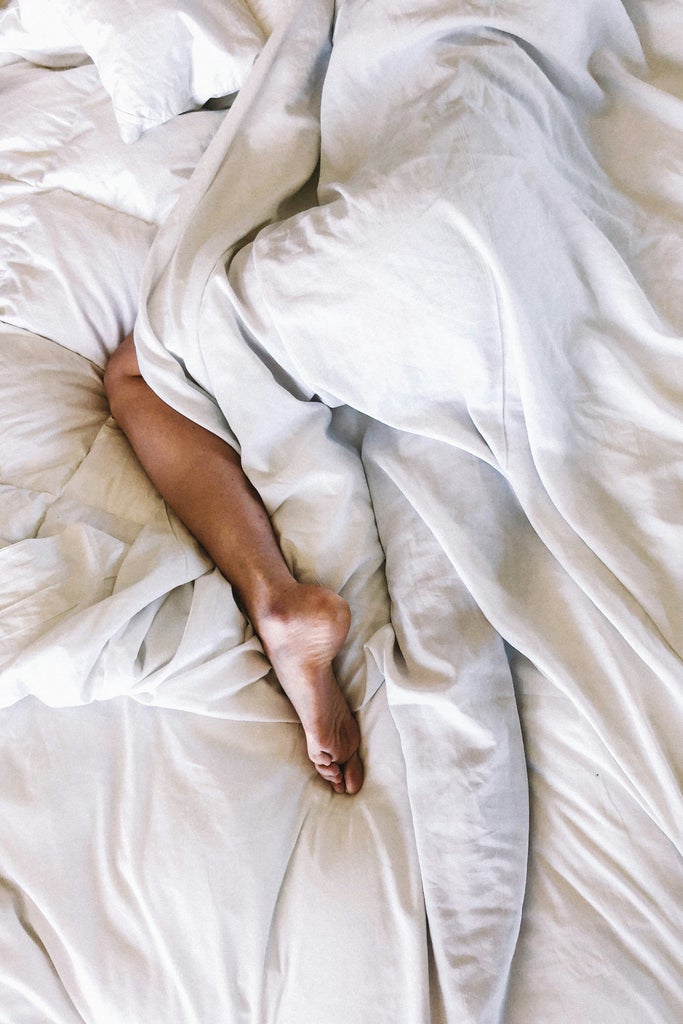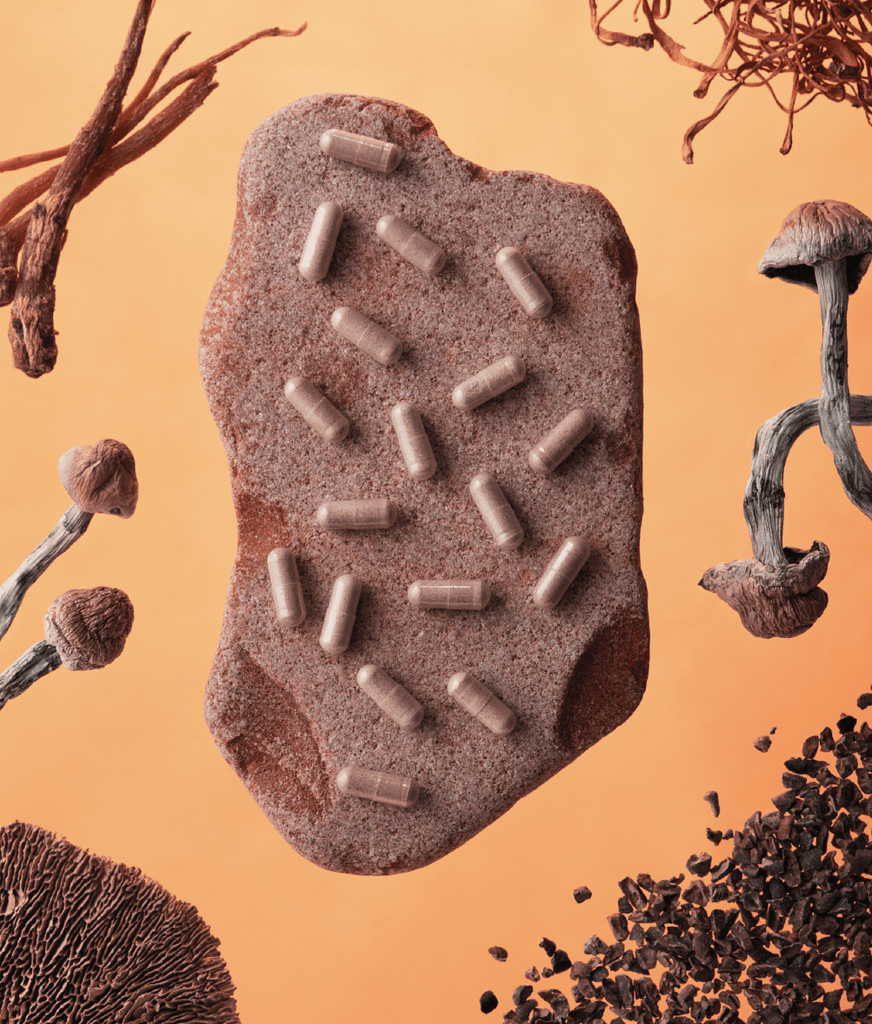Feel Lifted
Looking to microdose and macrodose to improve your mood? Get started with this bundle. .
Free shipping on all orders over $150
Free shipping on all orders over $150
Free shipping on all orders over $150
Free shipping on all orders over $150
Free shipping on all orders over $150
Free shipping on all orders over $150
Free shipping on all orders over $150
Free shipping on all orders over $150
Circadian Rhythm: What it is + how to adjust it naturally

The circadian rhythm is your internal body clock. It’s the internal system controlling your sleep-wake cycle, dictating when you’re sharp as a tack during the day and when you drift into dreamland at night. But it doesn’t stop there – it also moonlights as your mood modulator, cognition controller, and overall health patrol.
The circadian rhythm reacts to light, dark, and other environmental cues, triggering hormone production, body temperature shifts, and metabolism regulation. This biological flow either lulls you into sleep or sparks your alertness.
A well-tuned circadian rhythm can be a powerful antidote to stress, a mood elevator, an emotional resilience booster, and a strong ally for your immune system. It can turn you from a sleep-deprived Susan to a happy Hannah. Basically, it’s the most effective all-around drug on the planet.
Morning light sets your biological clock ticking, stimulating alertness during the day, ensuring sound sleep at night, and enhancing your overall mood. Sunlight is your body’s happiness switch, triggering the production of serotonin, the brain chemical associated with feelings of joy, calm, and focus.
In prolonged periods, an irregular circadian rhythm can lead to depression, anxiety and other mental health conditions. Studies have found that severity of depression correlates with how misaligned their circadian rhythm is. The good news is, your circadian rhythm is completely fixable – keep reading for how!
The circadian rhythm is even more important with seasonal affective disorder which correlates to reduced access to natural light in winter months. Read our blog for more on seasonal affective disorder.
Light and darkness are the duo that primarily dictate our sleep-wake cycle. By consciously soaking up natural light in the morning and minimizing exposure to artificial light before bedtime, we can train our circadian rhythms to march to our chosen beat.
Ever notice how you toss and turn, unable to catch those Z’s when it’s boiling hot in your bedroom? Or how you flip your pillow to feel the cold side? Or maybe stick a foot out from under the covers to chill a bit? That’s your body’s natural sleep-wake rhythm at work!
Your body needs to cool down by 1-3 degrees to fall asleep and stay that way. But when you’re hot, sleep can be elusive. That’s because your body wakes up when it heats up. So, staying cool is the key to a good night’s rest!
This is why intentional cold exposure (which actually causes your internal body temp to heat up in response to the cold) in the morning creates more alertness. It’s also why exercise early in the morning is beneficial for your circadian rhythm as it heats up the body and makes you more alert for the day ahead.

Your diet impacts your circadian rhythm too. What, when, and how much we eat can make or break our sleep quality and daytime alertness.
Caffeine lovers, listen up! It’s not about quitting but about knowing when and how much to drink. Timing is everything.
Drawing on wisdom from Dr. Andrew Huberman, renowned Neuroscientist and Stanford Professor, we bring you science-backed tools to regulate your circadian rhythm for improved sleep, heightened focus, mood enhancement, and overall well-being.
Whether you suffer from medication-induced sleep disorders, circadian rhythm sleep disorders, or delayed sleep phase disorder, it’s absolutely possible to overhaul poor sleep habits and recalibrate disrupted circadian rhythms.
Phase 1: wake up – two hours after waking
Phase 2: afternoon – early evening
Phase 3: after sunset – bedtime
When you wake up, your body temperature rises, which increases your cortisol levels. This is actually a good thing! It boosts your metabolism and focus levels. Though people demonize cortisol, it’s actually a vital hormone – you just don’t want it chronically elevated. Ideally, you’d like it to peak when you wake up.
How to encourage this early cortisol peak: view bright sunlight within 30-60 minutes of waking. Go outside sans sunglasses and turn towards the sun without staring directly at it. If it’s a sunny day, stay outside for at least 5 minutes, if it’s a cloudy day, stay outside for at least 10 minutes, and if it’s a very overcast or rainy day, stay out for about 20-30 minutes.

Why this works: there are neurons in our eyes that respond to sunlight upon waking – when they see the light, they set in motion a cascade of signals that trigger cortisol release, send wake-up signals to the brain and body, supress melatonin (the sleepy hormone), and start a timer for falling asleep later that night.
Why does this happen? It’s rooted in our biology – before electricity, when we were living off the land, we naturally woke up with the sunrise – our body is designed to align with the natural rhythm of the earth.
What if you wake up when it’s still dark out? Whether it’s wintertime or you just work extra early, here’s what Dr. Huberman recommends for those pre-light wake ups:
Turn on as many bright artificial lights as you can upon waking. If this doesn’t seem to be enough and you’re still struggling with sleep, you may want to invest in a brighter light source for mornings like a ring light or LED tablet.
Once the sun rises, go outside and view the sun for 10 minutes on sunny days and about 30 minutes on overcast days.
You can increase your core body temperature to encourage alertness and wakefulness in the morning:
How: get into cold water – whether that’s a cold shower for 1-3 minutes, an ice bath or a cold plunge, the cold water will trigger the release of adrenaline, norepinephrine, and dopamine which wake you up and increase your core body temperature. But how does cold water make your body hotter?? Because the external temp is cold, your body increases your core body temperature to compensate. Smart, right?
As an alternative to cold water, try morning movement – whether that’s walking, running, skipping, or some kind of aerobic workout, morning exercise will increase your core body temperature and help regulate your circadian rhythm.
If caffeine is part of your morning ritual, wait 1.5 to 2 hours post-waking before indulging. This helps avoid the “afternoon crash”. And remember, no (or very little) caffeine after 3pm, or it might crash your sleep party.
An early morning meal can boost alertness, just keep the portion small to avoid energy drain.
All of these strategies help create a predictable schedule that your autonomic nervous system can align with to promote alertness and sleepiness at the right times every day. So, if you’re struggling to fall asleep, stay asleep, or want to shift your circadian rhythm for an earlier/later bedtime or wake up time, try out these strategies in part 1 of your day and keep reading for part 2 and 3.
If possible, get outside and get sunlight in your eyes in the early evening hours. Permission from the doc to watch that sunset, my friend! The wavelengths in this early evening light communicate with your circadian clock that it’s evening and sleep is coming.
Viewing the sunset also protects your nervous system from the negative effects of artificial light in the later evening hours. That’s right, there’s science in that sunset.

Try to avoid drinking caffeine after 3 pm and if you do, limit it to less than 100 mg. If you’ve built up quite a tolerance and caffeine no longer affects your sleep, you can disregard this tip.
Naps are totally fine if they rejuvenate you but limit them to 90 minutes or less and avoid late afternoon siestas.
If you’re tired but don’t enjoy napping (or it makes you more tired or irritable), try an NSDR protocol, yoga nidra script, or self-hypnosis app for an afternoon refresh.
While morning light is a circadian rhythm’s best friend, night-time light is its worst enemy. Artificial lights after dark can disrupt your sleep cycle. To mitigate this, dim the lights in your house and place them low in the room. Avoid all screens if possible between 10pm to 4am – viewing bright lights during this period has been shown to boost depression rates.
Ideally as humans, we would only use candlelight or moonlight in the evening hours (just like our ancestors – as nature intended) however that’s obviously not possible for most people (though it might be kind of fun). So, do your best to limit light at night, especially if you’re struggling with your sleep situation.
If you’re planning on burning the midnight oil, watching the sunset will counterbalance the negative effects of artificial lights at night.

Just as we used the cold morning water to heat our bodies up in the AM, we can use a hot bath or shower to cool down before bed. And don’t forget to drop the room temperature by about 3 degrees for that perfect sleep environment.
Feeling peckish before bed? Try to resist the urge to munch on hefty meals; the closer it is to bedtime, the lighter your meal should be.
So your room is as bright as a Broadway stage and your partner is reading War & Peace? No problem. Eye masks can help you fall and stay asleep. And if noise bugs you or you’re stuck with a night owl partner, earplugs might just be your ticket to dreamland.
Breathe Easy
Dr. Huberman swears by nose-breathing for a quality snooze and a chiseled jawline. So much so, he suggests taping your mouth shut with medical tape to nix sleep apnea and snoring. Sounds weird, but it could be your ticket to sleep nirvana if all else fails.
Consistency is key
Craving a sleep schedule that works like clockwork, where you drift off effortlessly, sleep deeply, and wake up refreshed without the grating alarm? The secret sauce is consistency. Aim for the same wake and sleep times daily – yes, even on weekends if possible. Occasional late nights or lazy lie-ins are fine, but Dr. Huberman vouches for 80% consistency for best results.
When crossing time zones, you can nudge your circadian rhythm gently backwards or forwards. Ramp up your exercise or soak in bright lights earlier in the morning if you need to rise and retire early. Do the opposite if you need to shift later. Remember, going westwards is always easier than heading east.
Your body temperature hits its lowest point 90 minutes to 2 hours before your usual wake-up time – this time of day is known as your temperature minimum. By figuring out your temperature minimum, you can manipulate your wake-up and sleep times wherever at-home or on the go.
Figure out your temperature minimum by:
Adding up your last three wake up times
Divide that number by three to get your average wake up time
Minus 90 minutes to 2 hours from that time.
Now that you know your temperature minimum time, you can manipulate your circadian clock at home or when traveling. How: expose your eyes to bright light in the 4 hours after your temperature minimum to shift your circadian clock forward and wake up earlier + fall asleep earlier in the following days. This is called a ‘phase advance’ – you advance your clock.
The opposite is also true: if you view bright light in the 4 hours before your temperature minimum, you will phase delay your clock – wake up later and go to sleep later. You can use these techniques to shift your circadian clock in advance of travelling to a different time zone.
Shift workers often deal with circadian rhythm disorders thanks to their irregular work schedules. Especially shift workers that have to do ‘swing shifts’ with a few days on one shift and a few days on another – it messes up your cortisol release, limits learning, and disrupts the dopamine system.
If this is you, try to negotiate a consistent two-week schedule to offset the negative impacts. If that’s not possible, get as much light as possible when you need to be awake and alert. When it’s sleep time, dim those screens and limit overhead lights to regulate those circadian clocks.
How to cement those new sleep habits on a deep and lasting level? Psilocybin can be your ally. Known to boost neuroplasticity – your brain’s ability to adapt and change – it can help solidify new routines in your brain’s very structure for change that lasts.
Microdosing is our favorite method to solidify new habits – you’ll experience the brain-boosting benefits of psilocybin without the altered perception.

So there, you have it! Your guide to the best sleep and mood of your life. Sweet dreams, friends! 💤